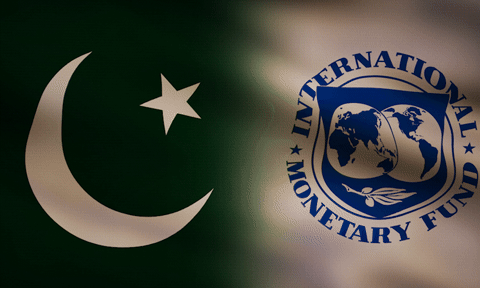EDITORIAL: The Ministry of Finance while briefing the cabinet on the overall picture of the country’s debt revealed that the incumbent government during the two years in office borrowed 24 billion dollars for servicing of debt and repayment for loans obtained by the previous governments; thus placing the entire blame on past governments for the rise in debt – a position unreservedly supported by Prime Minister Imran Khan and his cabinet colleagues for the past two years.
There is no doubt that during Ishaq Dar’s tenure as finance minister the government increased its reliance on foreign borrowing – bilateral, multilateral, from foreign commercial banks and debt equity through issuance of Sukuk/Eurobonds at rates appreciably more than the prevalent market rates – under the flawed assumption that the cost was lower than on domestic borrowing while keeping the rupee artificially overvalued to show lower annual debt servicing requirements.
In June 2016, the real effective exchange rate (REER) as per the State Bank of Pakistan website showed that the PKR overvalued by 17 rupees, at 117.3, by June 2017 it was overvalued to the tune of 21 rupees, at 121, and by June 2018 the REER was overvalued by 7.4 rupees, at 107.4. In September 2018 when Asad Umer was the finance minister, the REER was 106 and declined to 98.5 by April 2019, a decline due to the depreciation that many argue was due to the then ongoing negotiations with the International Monetary Fund (IMF). Notwithstanding the claims of the SBP today, notably that over or under-valuation of the currency cannot be ascertained through this data as it is a medium-term exercise taking many factors into account, an exercise that it has yet to undertake, yet what is clear and unambiguous from the data uploaded on the SBP website is that while the REER was 98.6 in April 2019 it declined to 92.6 in August 2019 and by June 2020 the provisional estimate places it as 93.
In June 2018, the rupee-dollar parity was at 121, the month when the REER was 107, and by April 2019 before the current economic team leaders were inducted, the REER was 98.5 while the rupee-dollar parity was 141. Today, the rupee-dollar parity is around 166 and surely the cabinet is cognizant of the contribution of the rupee depreciation over and above 100 (base year 2010) on debt servicing payments and repayments of loans as and when due.
According to estimates provided by the Ministry of Finance, each rupee loss vis-a-vis the US dollar adds around 100 billion rupees to the country’s debt and between April 2019 to June 2020 the rupee lost over 25 rupees which raised the debt repayments by a whopping 2.5 trillion rupees – a rise that cannot be laid at the doorstep of the previous administrations.
The loss of the rupee value during this year past can be attributed to the severe contractionary monetary and fiscal policies agreed with the IMF, leading to not only a contraction of the economy pre-Covid, exacerbated post-Covid, but also to lower than projected tax collections by the Federal Board of Revenue. The high discount rate acted as a repellant to domestic productive activity while attracting hot money that left soon after the pandemic. In other words, the cabinet needs to revisit the ongoing economic policies, both monetary and fiscal.
The other major source of concern for the government must be to compare its current non-development expenditure allocations with the revised estimates of the last full year of the PML-N administration (2016-17) to assess whether economies have indeed been affected notwithstanding the rhetoric to the contrary. Pensions rose from 333 billion rupees to 463 billion rupees last year (39 percent rise), subsidies rose from 147 billion rupees to 349.5 billion rupees (138 percent rise), running of civil government rose from 402 billion rupees to 445.8 billion rupees (11 percent rise) and defense rose from 999 billion rupees to 1227 billion rupees (23 percent rise). Debt service payments in 2017-18 were 1.5 trillion rupees with domestic debt accounting for 1.3 trillion rupees and in 2019-20 revised estimates total markup was 2709 billion rupees (a rise of 77 percent) while markup on domestic debt rose from 1333 billion rupees to 2375 billion rupees (a rise of 78 percent).
And what must be a source of serious consternation to the Prime Minister and his cabinet colleagues is the fact that total FBR taxes collected in 2017-18 were 3935 billion rupees while in 2019-20 the amount was 3908 billion rupees with the budget document claiming the target of 5.5 trillion rupees, a target that independent economists as well as FBR officials had termed unrealistic with FBR, urging the IMF to agree to a realistic target of 4.6 trillion rupees in December 2019, two months before the pandemic’s onslaught. While it is understandable that the Ministry of Finance presented data in a way that did not open the floodgates of criticism against their policies by the Prime Minister and his cabinet members; however, it is the responsibility of the cabinet to independently verify the claims of the Ministry of Finance in view of the fact that facts are sacred.
Copyright Business Recorder, 2020




















Comments
Comments are closed.